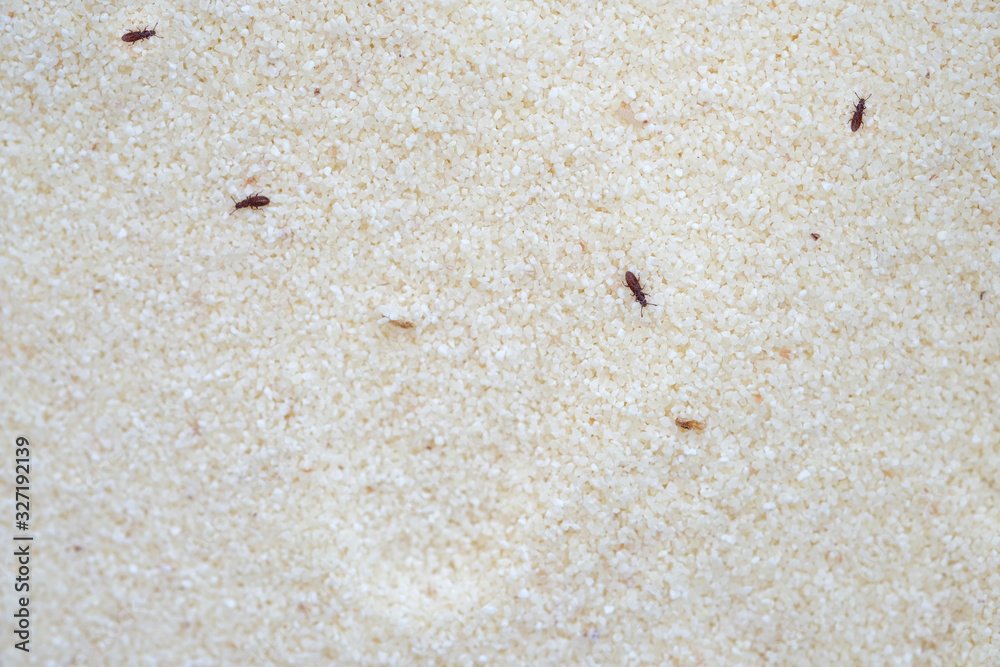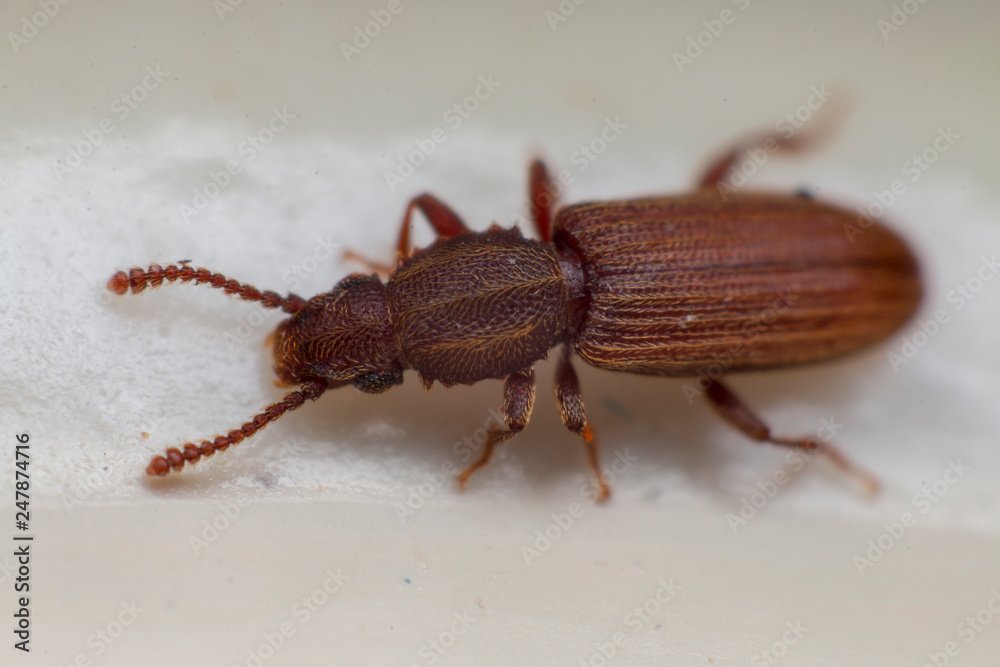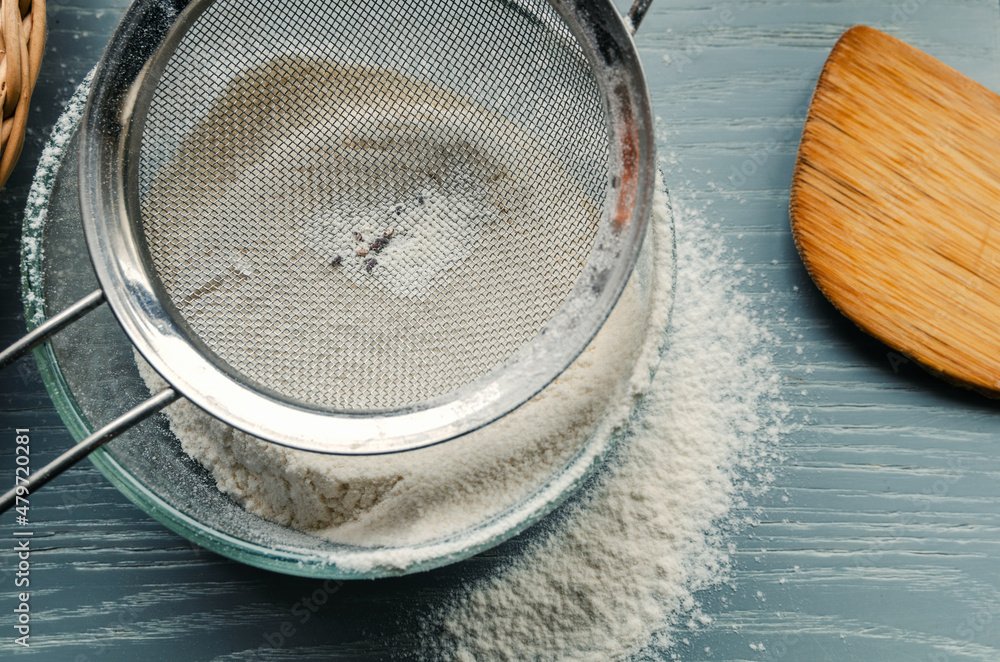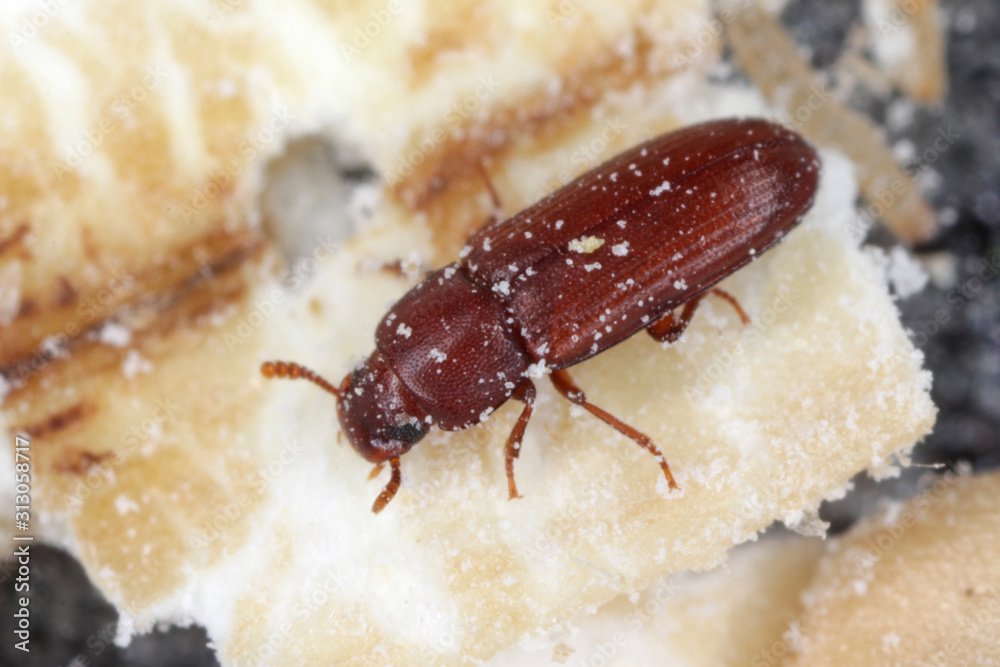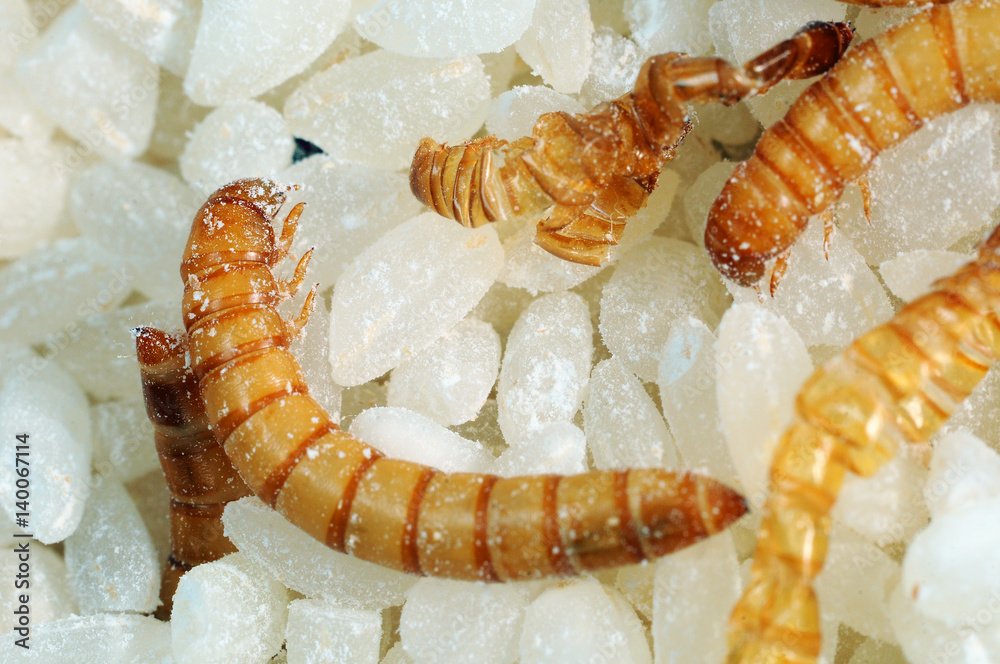Flour Beetle
Flour beetles are small, reddish-brown insects commonly found in stored food products, particularly flour, cereals, and grains. These beetles are major pantry pests, known for infesting dry food storage areas in homes and businesses. Common species include the red flour beetle and the confused flour beetle.
Appearance
Flour beetles are small, elongated beetles, usually about 3 to 5 mm long. They have a flattened, reddish-brown body with distinct antennae that end in a three-segmented club. The two common species, red flour beetles and confused flour beetles, look similar and are often mistaken for each other.
Life Stages
Flour beetles undergo complete metamorphosis, with four distinct stages: egg, larva, pupa, and adult. Females lay eggs in food sources, which hatch into larvae that feed and grow before pupating. The life cycle can be completed in 4 to 8 weeks, depending on temperature and food availability.
Seasonal Activity
Flour beetles can be active year-round in warm indoor environments, particularly in food storage areas. They reproduce more quickly in warmer temperatures, making infestations worse during summer months.
Dangers and Risks
Health Risks: While flour beetles do not pose direct health risks, they can contaminate food supplies with their presence, including droppings, shed skins, and dead bodies. This contamination can lead to spoilage and waste, making stored food unfit for consumption.
Property Damage: Flour beetles do not cause structural damage, but their infestations can lead to economic losses due to food contamination and the need to discard large quantities of infested products. Their presence can be particularly problematic in food processing facilities and storage areas.
Prevention and Control Tips
This section should include signs to watch for, simple DIY methods, and preventive measures to protect homes or properties from pests.
Prevention Methods
Seal cracks and gaps around windows, doors, and foundations to prevent entry. Use weather stripping on doors and windows, and reduce outdoor lighting, which attracts insects and, consequently, geckos.
Signs of Infestation
Frequent sightings of geckos on walls, ceilings, or near light sources indicate a possible infestation. Droppings that resemble small pellets can also be a sign of their presence.
DIY Measures
Use sticky traps in areas where geckos are commonly seen. Employ natural repellents like garlic or pepper spray near entry points. Keep food areas clean to reduce insect activity, which attracts geckos.
When to Contact a Professional
Contact a professional if gecko sightings are persistent, if droppings are found frequently in food preparation areas, or if you are concerned about potential health risks.
Trap Kill’s Approach to Control
Customized Treatment Plans:
Trap Kill uses targeted treatments to eliminate flour beetles, focusing on heat treatments, insecticide applications, and thorough inspections of food storage areas. We also offer preventive measures to avoid future infestations.
Certified, Eco-Friendly Solutions:
We prioritize the use of safe, non-toxic insecticides in food areas, ensuring both effectiveness and safety. Regular monitoring and follow-up visits help maintain pest-free food storage.



